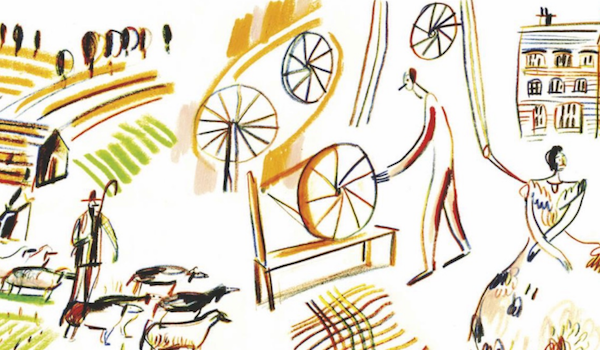
Welsh Flannel
Happy St David's Day to all of our Welsh readers! To celebrate Wales today we've dug into our archive re-publish Sarah Jane Downing's article on Welsh flannel, from Selvedge issue 79...

First produced in Montgomeryshire in mid-Wales, flannel has its origins in the wool trade of the medieval era when it was made from the local Welsh woollen and worsted spin wool, carded for softness. The plain or twill weave was fulled or brushed to create a fuzzy nap, soft to the touch that would also trap air to conserve warmth.
After the Act of Union between England and Wales in 1536, the Shrewsbury Drapers Company became the middleman in the woollen cloth trade, governing the production and export of flannel and other woollen cloths. The guild only released control in the 1790s, finally allowing Welsh woollen manufacture to develop and prosper so that by the 1830s, Newtown in Montgomeryshire was known as ‘The Leeds of Wales’.
The New Bath Guide, written by Christopher Anstey in 1766, recalls bathers at the spas wearing voluminous flannel gowns to protect their modesty whilst bathing: ‘Oh! Twas pretty to see them all put on their flannels and then take to the waters like so many spaniels.’ These voluminous bell-shaped gowns were also adopted for sea bathing and remained in use until the 1860s. More fashionable swimmers wore trousers and tunics tailored in flannel, but as The Housewife magazine noted in 1895, flannel impeded the swimmer as ‘it fills with water and the weight is enormous. A jacket and trousers of very fine serge is the best for swimming!’
You can read this article in full in Selvedge issue 79.
Illustration by Nina Fuga.
